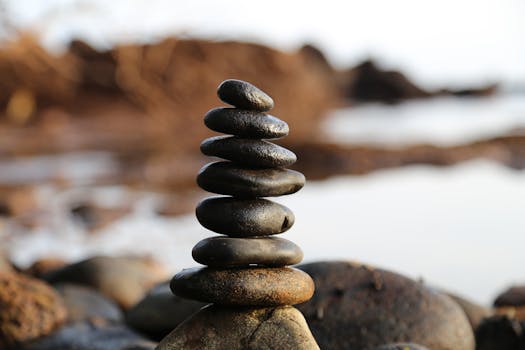
“
Mindfulness Practices for Stress Relief: A Comprehensive Guide
Mindfulness practices for stress relief have become increasingly popular in recent years, and for good reason. With the demands of modern life, it’s easy to get caught up in stress and anxiety. However, by incorporating mindfulness practices into your daily routine, you can reduce stress, improve your mental health, and increase your overall sense of well-being.
What is Mindfulness?

Mindfulness is the practice of being present in the moment, paying attention to your thoughts, feelings, and sensations without judgment. It’s about cultivating awareness and acceptance of the present moment, rather than getting caught up in worries about the past or future. For more on enhancing your mental health, check out our post on Natural Remedies for Common Ailments.
Benefits of Mindfulness for Stress Relief

The benefits of mindfulness for stress relief are numerous. Some of the most significant advantages include:
- Reduced stress and anxiety
- Improved mood and emotional regulation
- Enhanced cognitive function and focus
- Improved sleep quality
- Increased self-awareness and self-acceptance
Mindfulness Practices for Stress Relief

There are many different mindfulness practices that you can use for stress relief. Some of the most effective techniques include:
- Meditation: sitting in silence, focusing on your breath, and letting go of distracting thoughts
- Yoga: combining physical movement with deep breathing and mindfulness techniques
- Body scan: lying down or sitting comfortably, and bringing your attention to different parts of your body
- Walking meditation: paying attention to your feet touching the ground, the sensation of your feet moving, and the rhythm of your breath
- Mindful breathing: focusing on your breath, feeling the sensation of the air entering and leaving your nostrils, and letting go of distracting thoughts
Getting Started with Mindfulness

Getting started with mindfulness is easier than you think. Here are some tips to help you get started:
- Start small: begin with short periods of mindfulness practice, such as 5-10 minutes a day, and gradually increase the duration as you become more comfortable with the practice
- Find a quiet space: identify a quiet, comfortable space where you can practice mindfulness without distractions
- Use guided recordings: listen to guided recordings of mindfulness meditations, such as those found on YouTube or mobile apps like Headspace or Calm
- Be patient: remember that mindfulness is a practice, and it’s okay if your mind wanders. Gently bring your attention back to the present moment, and don’t get discouraged if you find it challenging at first
Conclusion

Mindfulness practices for stress relief are a powerful tool for improving your mental health and overall well-being. By incorporating mindfulness into your daily routine, you can reduce stress, improve your mood, and increase your sense of calm and clarity. Remember to start small, be patient, and find a quiet space to practice. With regular practice, you can experience the many benefits of mindfulness and live a happier, healthier life. For more tips on maintaining a healthy lifestyle, visit our article on Healthy Meal Prep Ideas for Busy Lifestyles.
See more:
https://www.mindful.org/
https://www.headspace.com/
https://www.calm.com/






